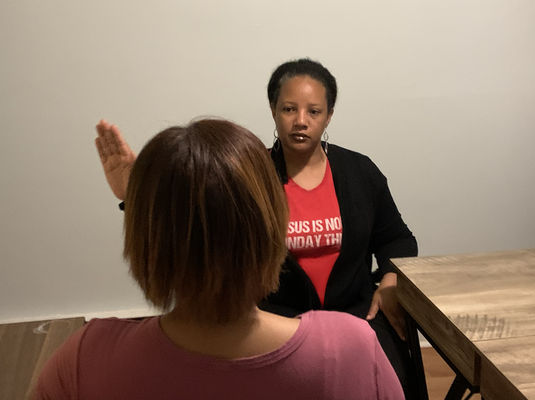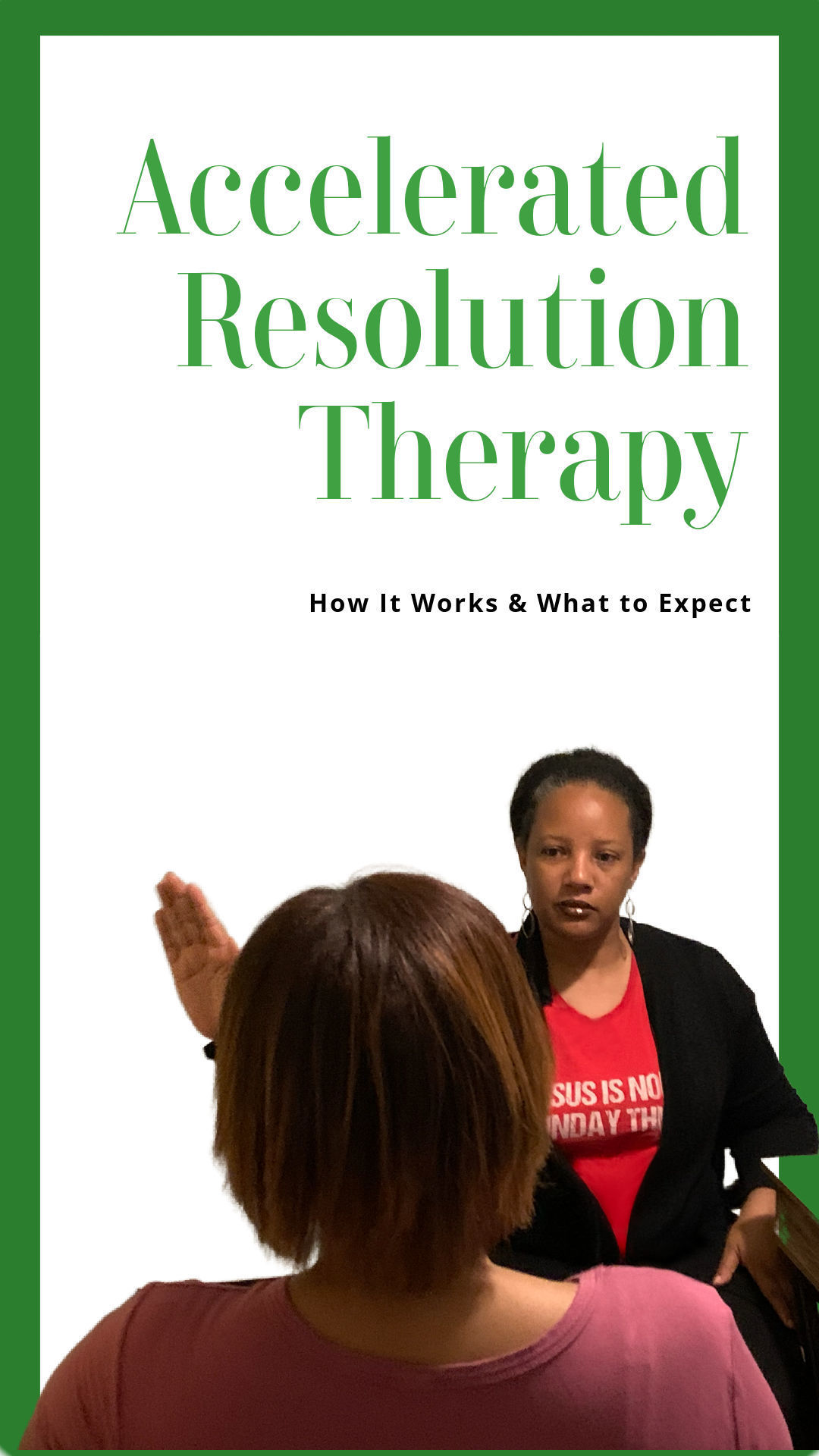
If you or a loved one has been struggling to move past something that has caused trauma or other mental illness, it may be a good idea to look into Accelerated Resolution Therapy.
Accelerated Resolution Therapy (ART) is a quick and effective therapy for treating various issues like trauma, anxiety, depression, sleep problems, and low self-esteem. It is backed by evidence and uses rapid eye movements as well as image rescripting to help patients process and heal from their experiences.
ART is a short-term therapy that has shown to be effective in reducing symptoms of trauma, other mental health symptoms (i.e., anxiety and depression) and increasing your resilience.
How Was Art Developed?
Laney Rosenzweig, a licensed marriage and family therapist, developed accelerated resolution therapy in 2008. ART was birthed from Laney’s experience with various treatment methods, including eye movement desensitization and reprocessing (EMDR).
Her training and practice in EMDR helped her discover that rapid eye movement was very beneficial in treatment, so she figured that adjusting it could improve the process.
Soon after perfecting the process, Laney formulated a set of comprehensive and directive guidelines based on various therapeutic frameworks, thereby establishing ART as an effective treatment method.
ART was formally recognized as an evidence-based practice by the National Registry of Evidence-based Programs and Practices (NREPP) in 2015 and was subsequently prescribed as an effective psychotherapy for posttraumatic stress, depression, and anxiety by the Substance Abuse and Mental Health Services Administration that same year. You can view Laney Rosenzweig's TedTalk below.
What Does ART Treat?
ART has proven to be an effective treatment for symptoms associated with Post Traumatic Stress Disorder (PTSD), but it can be used to treat much more than that.
Here is a list of issues ART can treat:
Anxiety
Depression
Phobias
Panic attack
Obsessive-Compulsive Disorder (OCD)
Addiction
Substance Abuse
Performance Anxiety
Family Issues
Victimization/poor Self Image
Relationship Issues/Infidelity
Codependency
Grief and loss
Job-related Stress
Dyslexia
Combat-related posttraumatic stress
Sleep issues
Issues related to abuse, including sexual abuse
If you have been dealing with trauma caused by something that’s not on this list, please speak to your therapist. Your therapist would know best if ART will work for you. Pin It
Pin It
Is Accelerated Resolution Therapy Legit?
Yes, according to the National Library Of Medicine, ART is a new therapy for post-traumatic stress disorder (PTSD) that has shown exceptional promise.
The first study to be published on ART involved 80 participants, all of whom were suffering from PTSD. The majority of these participants were females who had experienced violence or the loss of a loved one at some point in their lives. The study found that almost 80% of the participants responded positively to treatment after an average of 4 sessions.
Is Accelerated Resolution Therapy Evidence-Based?
Different experts will have different opinions on whether the current evidence for ART is strong enough to warrant putting it on the same level as other more established trauma-focused approaches like PE, CPT, NET, and EMDR.
However, although ART is relatively new, it was federally recognized as an evidence-based treatment model by the NREPP in 2015, so it has proven itself to be effective.
The National Registry of Evidence-based Programs and Practices found that ART is an effective psychotherapy model in the treatment of PTSD, depression, stress, and personal resilience. They also found it to be a promising therapy approach for the symptoms of phobia, panic, anxiety, sleep and wake disorders, disruptive and antisocial behaviors, as well as general functioning or well-being.
Therefore, even though it does not have as much evidence backing as the older therapy techniques, it is still evidence-based and effective in its purposes.
The Theory and Principles of ART
ART draws from a variety of treatment approaches, including EMDR, Gestalt, cognitive behavioral therapy (CBT), and brief psychodynamic therapy (BPP). It utilizes techniques such as rapid eye movement, image rescripting, and guided imagery to help people struggling with trauma. By employing these methods, ART practitioners can change the way stress-generating images are stored in the brain, thus reducing their negative effects.
To better understand how ART works, we need to know how it is used. ART can be used along with other treatments including medication and the person in therapy gets to set the pace in their ART sessions. You get to decide which memories to share and when.
It’s also important to note that although ART uses rapid eye movement to mimic the eye movements that occur during dreams, it does not involve hypnotherapy. Furthermore, ART therapists do not assign homework, and people do not need to recall or process traumatic memories between sessions.
What Are the Benefits of ART
ART may share some similarities with other treatment methods like CBT and EMDR, but there are several key aspects that make it unique, such as: accelerated relief; interactive therapy; and positive memory replacement.
Accelerated Relief
ART has been shown to produce a faster recovery than other methods. It is actually designed to be delivered in a shorter amount of time, usually 1 to 5 sessions over the course of 2 weeks. Many people experience positive results from this type of therapy within that short time frame. The techniques used during these sessions are designed to provide quick relief from symptoms as they come up.
Interactive Therapy:
As the therapist guides the person in therapy to recall traumatic memories, they use CBT techniques like Vivo exposure to manage the triggered response. However, unlike CBT, in ART sessions the therapist also immediately helps the person cope with the physiological distress that accompanies traumatic memories by teaching them how to interrupt the recall process. In simple terms, the interactive portions of ART are designed to allow individuals to develop their own solutions to traumatic experiences. As memories are recalled, the therapist helps them shift to a more positive memory, often by using imagery rescripting.
Positive Memory Replacement
ART can help people change the way they feel about traumatic memories, even if it can't change the actual facts. In ART, this process is called voluntary memory/image replacement. Therapists encourage their patients to imagine a more positive memory in place of the traumatic one. The details of the trauma may still be recalled, but the patient no longer feels the same physical, emotional, or visceral response.
What Happens During an ART Session
When it comes to therapy techniques, especially newer and more Like this on Facebook innovative ones like ART, going into a session can be nerve-wracking. For this reason, it’s important to know what to expect from a session.
Like this on Facebook innovative ones like ART, going into a session can be nerve-wracking. For this reason, it’s important to know what to expect from a session.
At first, your therapist will ensure that you feel comfortable by reassuring you that it is a safe space. They will talk to you and get accustomed to you as you do with them. As soon as you are comfortable, your therapist will dive into accelerated resolution therapy.
The therapy will start when your therapist asks you to follow their hand back and forth while trying to recall a memory that you want to address or heal (when ART is conducted vitrually, you may be asked to follow a ball on a screen). This process could last anywhere between 30 seconds and 10 minutes. While you’re recalling memories, your therapist will observe your physical and emotional reactions.
Gently guiding you through the process, they will then encourage you to make any changes you would like to make to the images you have recalled. The therapist will continue to stay focused and engaged with you as they gently transition you out of that image and back into the present reality of the therapy room.
As you go through your sessions and healing process, you will be encouraged to focus on one image at a time. When you find relief from one, you can move on to the next. Each session will be the same and you will see a noticeable difference after the first session. Usually, 1 to 5 sessions are needed.
It is important to remember that your factual memories are not being replaced in this therapy session, nor is there any hypnosis involved in this approach. Your memories will stay, but the pain associated with them will not.
What Is The Training For Art
Although Accelerated Resolution Therapy is not hard to do, it does require proper training. Becoming certified in ART is beneficial to both the therapist and the client. This is because by practicing ART the therapist avoids burnout, and the client gets to perform the therapy with a specifically qualified therapist they can trust.
Training For Clinicians
The Rosenzweig Center for Rapid Recovery offers regular training sessions at different locations throughout the United States and Canada. These brief but intensive 2 to 3-day pieces of training include both basic and advanced levels. The training structure also includes lectures, videos, practicum, and live demonstrations. You can find more about ART training by visiting the ART training website.
Training For Lay People
Non-licensed professionals and parents can be trained how to use ART techniques for sensation processing only. This training is called Safety Awareness Focused Technique (SAF-T). SAF-T is marketed as a revolutionary way to calm individuals without medications as the eye movements used during ART therapy trigger a calming response in the brain. For children, it is referred to as SAF-T versus Time Outs. You can find out more about SAF-T here.
What Is The Difference Between EMDR And Accelerated Resolution Therapy?
Both ART and EMDR are effective treatment techniques that involve eye movement to help reduce pain from traumatic memories. However, ART focuses more directly on how negative images from trauma are connected with emotional and physical reactions.
Different therapists will use different methods in treatment sessions with clients based on their presenting issues. For example, a therapist treating a client with PTSD may use a different approach than a therapist treating a client with sexual abuse or addiction.
ART is a short-term therapy treatment that has been shown to provide relief from distress in a single session unlike therapies like EMDR which may require several sessions to produce change.
What Should You Be Aware of With ART
Given that trauma work often involves addressing distressing memories, treatments that target these memories can sometimes evoke intense emotional and physical reactions. While ART is designed to help you safely manage these reactions, it is important to be aware of the possibility of further trauma.
Also, keep in mind that if you have serious physical or psychological conditions you should consult your doctor before engaging in this kind of treatment as strong sensations are likely to be experienced during sessions. Your eyesight should especially be taken into consideration if there are any concerns.
If you have any questions or concerns about the treatment you should reach out to your therapist as soon as possible. By doing this you will be 100% sure as to whether accelerated research therapy is the right type of therapy for you.
About the Author:
 Corine Williams, Ph.D. is Clinical Psychologist that is currently seeing clients in the States of Maryland, New Jersey, and New York. You can find out more about her practice by visiting www.therapyforchristians.com/corinewilliams. In addition to providing individual therapy, Dr. Williams is also passionate about writing books and designing merchandise that educate, uplift, and normalize mental health subject in the Christian community. You can find out more about her at www.booksbycorine.com or by visiting her amazon profile here: https://www.amazon.com/Corine-Hyman/e/B00AWZ5FL2
Corine Williams, Ph.D. is Clinical Psychologist that is currently seeing clients in the States of Maryland, New Jersey, and New York. You can find out more about her practice by visiting www.therapyforchristians.com/corinewilliams. In addition to providing individual therapy, Dr. Williams is also passionate about writing books and designing merchandise that educate, uplift, and normalize mental health subject in the Christian community. You can find out more about her at www.booksbycorine.com or by visiting her amazon profile here: https://www.amazon.com/Corine-Hyman/e/B00AWZ5FL2
Help us increase mental health awareness in the Christian community by donating through our paypal link here: www.paypal.com/therapyforchristians, joining our mailing list by clicking below, or join our provider list here: Provider listing
Disclaimer: the information, including but not limited to, text, graphics, images and other material contained on this article are for informational purposes only. No material on this site is intended to be a substitute for professional medical advice, diagnosis or treatment. If you are looking for a Christian counselor near you, please check out our directory located here: Christians Therapist Near Me
Featured Christian Therapists
Specialty Psychiatrist or Nurse Practiti... Located in Tucson, AZ
View Listing.png)









